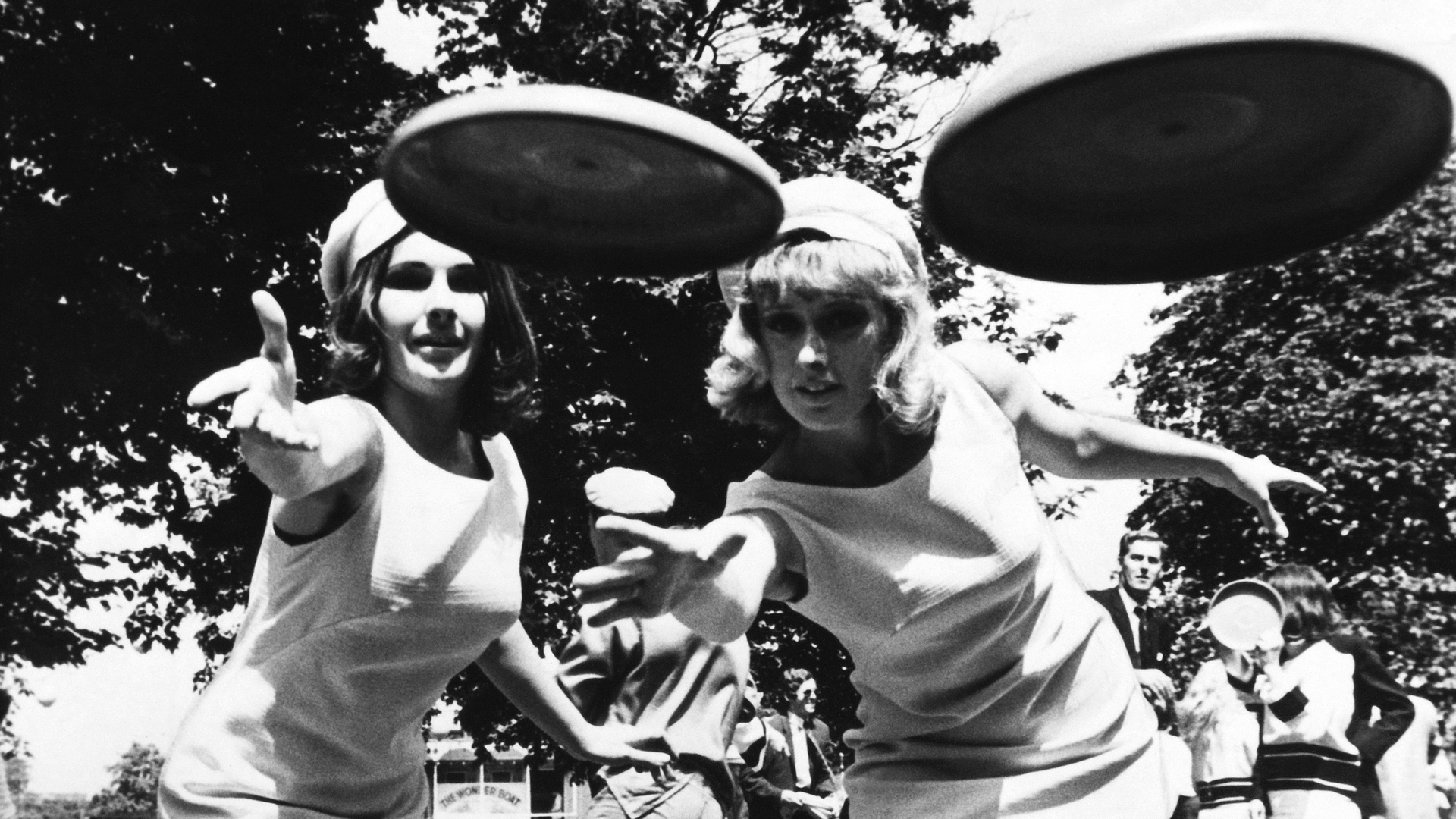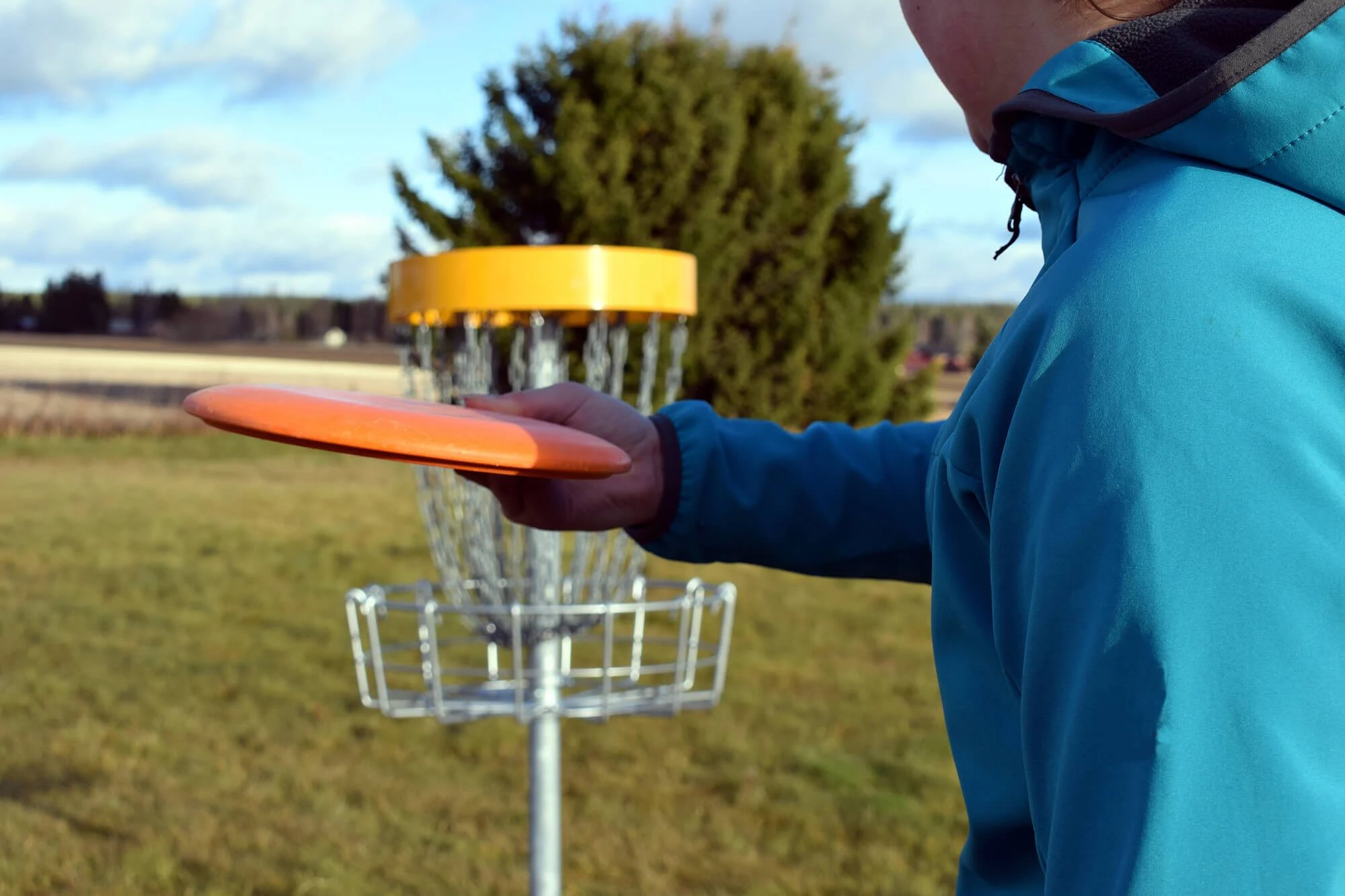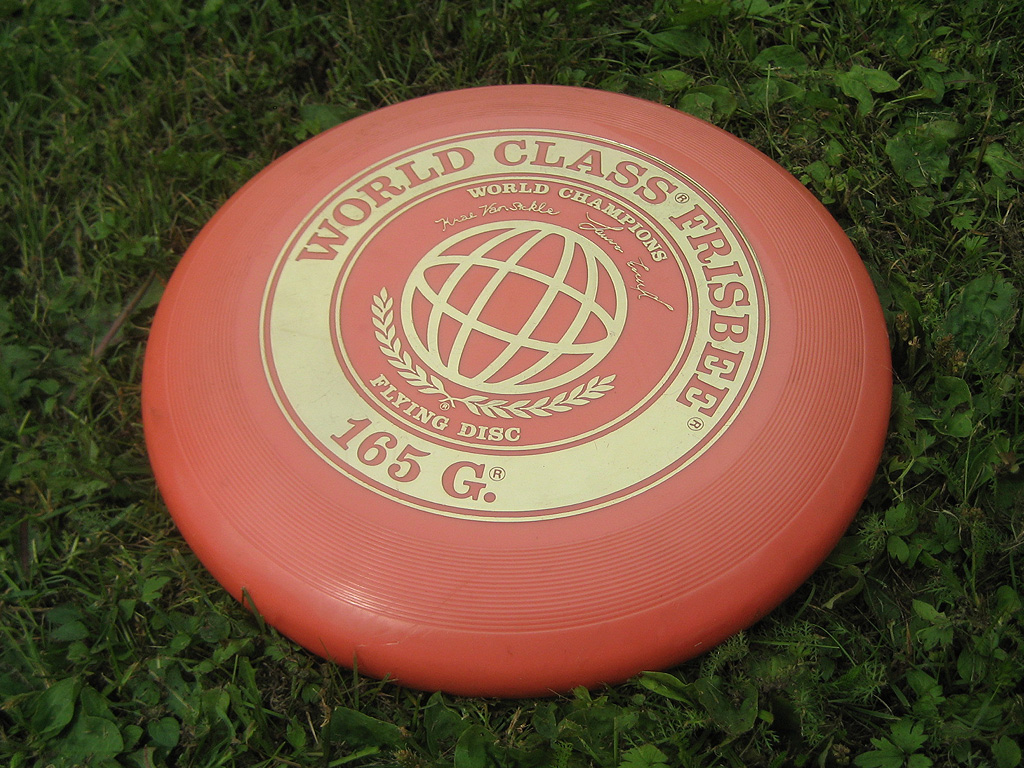The Frisbee got its name from the Frisbie Pie Company, whose pie tins were thrown and caught as entertainment. College students in the 1950s coined the term “Frisbie-ing,” which led to the toy’s current name.
The simple act of tossing a pie tin evolved into a worldwide phenomenon with the creation of the Frisbee. Pie tins from the Frisbie Pie Company became the unlikely source of joy for students seeking a break from their academic routines.
They would fling the tins back and forth, enjoying the aerodynamic flight. This pastime spread rapidly across college campuses, becoming a staple of leisure and recreation. Out of this practice, a new word and a whole new sport emerged, transcending the pie company’s original context. Wham-O, a toy company, capitalized on this growing trend, trademarking the name “Frisbee” in 1957, giving birth to the plastic flying disc we know today. This playful activity not only led to casual games but also developed into organized sports such as Ultimate frisbee and disc golf, highlighting the Frisbee’s versatile appeal.
Contents
The Origins Of The Flying Disc
Picture a sunny day at the park, a circular object soaring through the sky. This object, known as the Frisbee, brings joy to countless individuals across the globe. But ever wonder how the Frisbee got its catchy name? Intrigue surrounds its humble beginnings. Let’s take a flight back in time to uncover the genesis of this popular flying disc.
Early Inventions
The story of the flying disc begins over a century ago. It wasn’t always called a Frisbee. In the 1870s, college students in New England tossed empty pie tins to each other, shouting “Frisbie’s Pies!” in reference to the local bakery that made them. This game laid the groundwork for what would become the Frisbee.
- Pie tins from Frisbie Pie Company used for tossing
- The word “Frisbie” became associated with the act of tossing the tins
Development Through The Years
The flying disc evolved drastically over the decades. In the 1940s, Walter Morrison improved the design, inventing a plastic version called the Pluto Platter. This design caught the eye of the Wham-O toy company.
- 1940s: Walter Morrison crafts Pluto Platter
- 1957: Wham-O renames Pluto Platter to “Frisbee”
- 1960s-70s: Frisbee becomes a cultural phenomenon
Wham-O coined the term Frisbee, spinning off the original pie tin’s catchphrase. The renamed product flew onto shelves in 1957, blending fun with aerodynamics. Its popularity soared, shaping the Frisbee into a cultural fixture.
| Year | Event |
|---|---|
| 1870s | Pie tins used as early flying discs |
| 1940s | Walter Morrison designs Pluto Platter |
| 1957 | Wham-O markets Pluto Platter as Frisbee |
| 1960s-70s | Frisbee becomes widely popular |
The simple act of tossing a pie tin blossomed into a global pastime. The Frisbee’s name and design have captivated millions, turning it into an enduring symbol of fun and freedom.
The Transition From Pie Plate To Plaything
The Transition from Pie Plate to Plaything traces the curious evolution of the Frisbee. This iconic flying disc began its journey as a simple kitchen item. Whirling through history, it transformed into a beloved global sport accessory. Let’s delve into how a humble pie plate spun into recreational gold.
The Frisbie Pie Company Connection
Our story unfolds in the late 19th century with the Frisbie Pie Company of Bridgeport, Connecticut. Their flaky pies were popular, but it was their tin pie plates that sparked an unexpected trend. Each plate had “Frisbie’s Pies” embossed on it. These pie plates would soon lead to a cultural phenomenon.
College Kids And Pie Tins
By the mid-20th century, college students discovered a novel use for these pie tins. They would toss them around for fun, shouting “Frisbie!” to warn others of the incoming ‘flying’ object. This simple call-out was integral to the Frisbee’s naming. Excitement around these flying pie plates continued to rise, setting the stage for what was to come.
- Students at Yale and other universities embraced the game.
- Flying discs began to symbolize youth culture and outdoor fun.
- ‘Frisbie-ing’ became a common pastime on college campuses.
Trademarking A Cultural Icon
Trademarking a cultural icon is not just about legal protection; it’s about capturing the essence of an era. The Frisbee, a simple flying disc, has soared past being a mere toy to becoming a symbol of fun and leisure worldwide. But how did it transition from a playful object to a trademarked treasure? Let’s dive into the fascinating journey behind this beloved pastime.
Wham-o Steps In
Wham-O, a toy company known for captivating the market, recognized potential in a flying pie plate. This was no ordinary kitchen item; it glided through the air with ease. In 1957, Wham-O founders Richard Knerr and Arthur “Spud” Melin caught wind of this new craze. They saw an opportunity to revolutionize outdoor play.
- Wham-O acquired the rights.
- Rebranded the flying disc, injecting appeal.
- Trademarked the design and name, securing exclusivity.
Their sharp instincts led to a key business move. Wham-O’s commitment to quality and innovation set the flight path for this cultural icon.
The Birth Of The ‘frisbee’
The name ‘Frisbee’ sparked from a mix of happenstance and nostalgia. The name echoed the sound of the disc swooshing through the air, ‘frisss bee!’, and reminded users of the Frisbie Pie Company, whose empty pie tins inspired the toy’s shape and flight.
- Toy enthusiasts tossed pie tins, calling it ‘Frisbie-ing.’
- Wham-O capitalized on this vernacular.
- Trademarked ‘Frisbee’, making it an iconic brand.
By stamping the name ‘Frisbee’ onto the flying disc, Wham-O didn’t just sell a product; they launched a cultural phenomenon. The brand stood out in an ocean of imitators, forever associating Wham-O with fun in the sun.

Credit: www.history.com
Frisbee Goes Global
The fascinating tale of how a simple flying disc transformed into a global sensation begins in the picturesque college quads of America. The Frisbee name, etched in the pages of history, soared beyond its humble origins to captivate sports enthusiasts around the world. This section delves into its incredible journey from local pastime to international craze.
From Campuses To The World
Frisbees first took flight on college campuses, whizzing through the air as students took breaks from their studies. It wasn’t long before the excitement and ease of play caught the attention of people beyond the academic world. The simple joy of tossing a disc transcended languages and cultures, taking this pastime to every corner of the globe.
As the popularity of the Frisbee soared, its universal appeal united players from various backgrounds. The Frisbee became more than just a toy; it was a symbol of fun, freedom, and connection.
The Growth Of Disc Sports
The Frisbee’s rise in popularity laid the groundwork for an entirely new field of sports. Disc sports, such as Ultimate and Disc Golf, emerged and established their niche. Clubs, leagues, and professional competitions sprouted, offering structured play and global tournaments.
- Ultimate Frisbee leagues attracted teams from multiple countries, promoting sportsmanship and teamwork.
- Disc Golf courses sprang up in parks, attracting players of all ages with its accessible blend of skill and leisure.
- Freestyle competitions showcased the artistic potential of Frisbee, with players performing impressive tricks.
These developments in disc sports not only added credence to the Frisbee’s athletic potential but also forged a community of passionate enthusiasts. Disc sports continue to evolve, drawing new fans to the thrill of the Frisbee each year.
Legacy And Influence
The Frisbee has soared beyond a simple toy to become a cultural icon. Born out of a simple act of flinging pie tins, its evolution is a remarkable tale. Today, the Frisbee’s legacy reaches into multiple spheres, touching lives and shaping activities. Its influence is seen in sports, entertainment, and leisure across the globe.
Impact On Popular Culture
The Frisbee has had a profound impact on popular culture. It’s featured in movies, songs, and TV shows. Often, it symbolizes fun, freedom, and ease. Here are a few ways it’s made an impact:
- Movies: Scenes with characters playing Frisbee depict joy and camaraderie.
- Music: Musicians reference it to evoke a sense of whimsy and nostalgia.
- Television: Frisbees often appear in family and lifestyle programs.
Enduring Popularity
The Frisbee’s popularity never seems to wane. It remains a beloved pastime for people of all ages. Here are some key factors contributing to its enduring popularity:
| Reason | Explanation |
|---|---|
| Accessibility | Easy to play, affordable, and can be enjoyed in various settings. |
| Versatility | Suitable for casual play or competitive sports like Ultimate Frisbee. |
| Intergenerational Appeal | Beloved by both children and adults, it bridges generational gaps. |

Credit: storables.com

Credit: en.wikipedia.org
Frequently Asked Questions Of How Did Frisbee Get Its Name
What Brand Was The First Frisbee?
The original brand of the first Frisbee was Wham-O. This toy gained popularity in the 1950s and remains iconic.
What Is The Former Name Of The Frisbee?
The former name of the Frisbee is “Pluto Platter. ” The name change to “Frisbee” occurred after Wham-O toy company acquired it in 1957.
How Was The Frisbee Invented By Mistake?
The Frisbee was inadvertently created when students tossed empty pie tins from the Frisbie Pie Company for fun, sparking the toy’s design.
Did The Inventor Of The Frisbee Become A Frisbee?
Yes, Walter Morrison, the inventor of the Frisbee, was cremated and his ashes were molded into Frisbees after he passed away.
Conclusion
The origin of the Frisbee name takes us on a historical flight, akin to the toy itself. We’ve seen how a pie company’s name soared into a symbol of outdoor fun. By tracing the unexpected journey of the Frisbee’s name, we uncover a playful twist of fate.
Let’s keep the spirit of the Frisbee alive every time it’s tossed under the open sky.